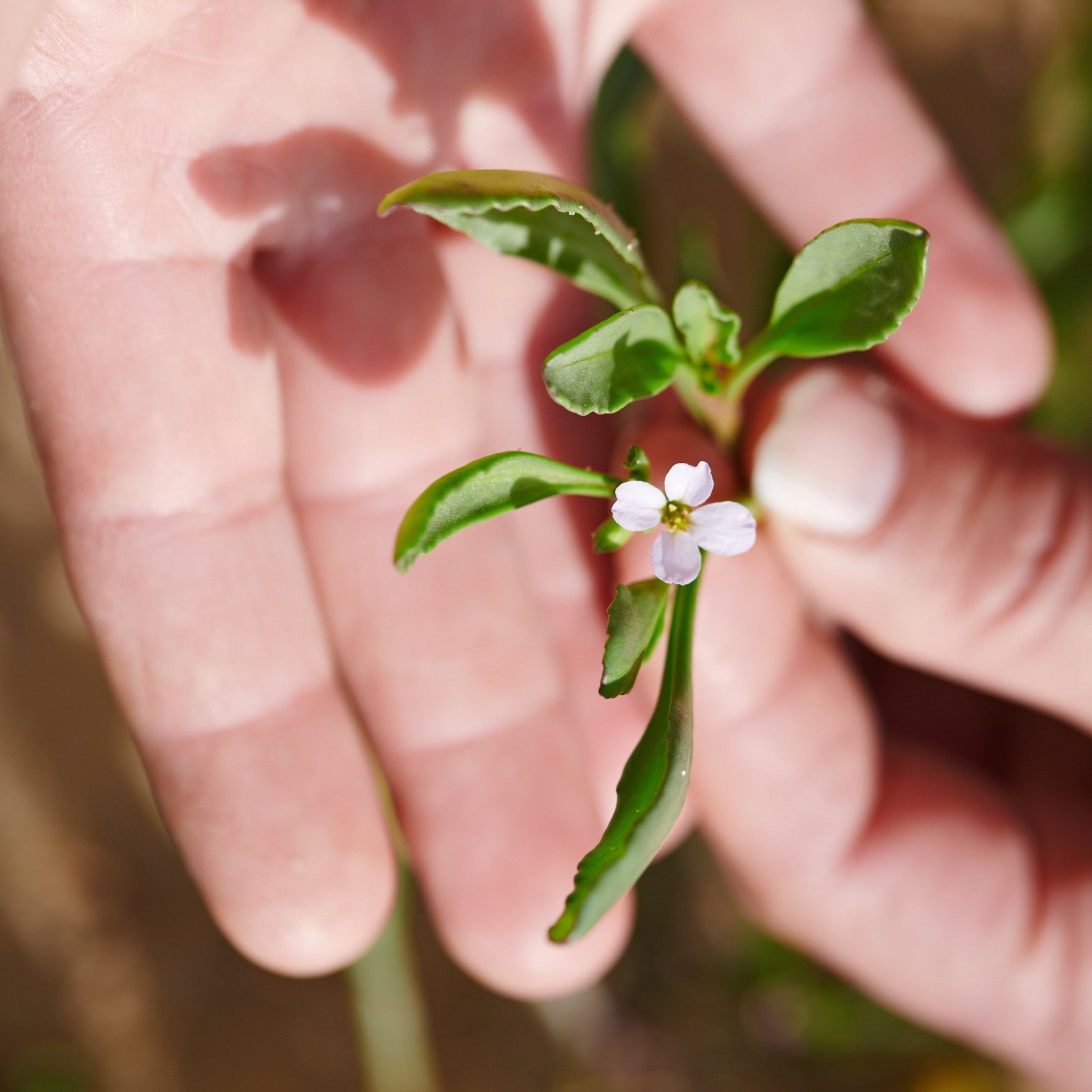Beach mustard: a foraged green to spice things up!
To all the people who love some spice in their lives, this one is for you. Beach mustard is a wild green that commonly grows on sand dunes and beaches in most of the coastal areas of Australia. This wild plant has a remarkable spicy-salty taste and is easy to spot due to its resemblance to a succulent rocket plant.
In Australia there are two varieties of beach mustard, both coming from overseas: Cakile maritima, from Europe, and Cakile edentula from North America. Beach mustard was brought to the coasts of Australia by ships visiting the country. The presence of beach mustard in Australia was first recorded in 1863 in Philip Island, Victoria. Both varieties of beach mustard are now naturalised in Australia and can be found on coastal areas from Mackay, Queensland, all the way around to Carnarvon in Western Australia. They are both very similar in appearance and can be interchangeable. This wild green is widespread and often forms large colonies, making it very easy to spot while on your beach walk.
This plant can be used as an ingredient to give a spicy and salty kick to classic recipes. It can be added to soups, salads,and seafood plates.
How to identify and forage beach mustard
Snapshot
In simple terms, beach mustard is just like wild mustard (Brassica) but fleshier and saltier. This wild green grows from a central rosette, up to 50 centimetres in height. Following an annual cycle, beach mustard dies off each year after seeding and is one of the few plants that grow in severe costal conditions, surviving big seas and high salinity. Its resistance to these harsh conditions is due to the plant’s ability to retain great amounts of water and absorb nutrients from the seaweeds that wash ashore.
Leaves and stalks
The leaves have a variety of forms, from narrow leaflets to wide and dented, quite similar to rocket leaves, but chunkier. They grow up to 10 centimetres long and 4 centimetres wide.
The leaves are salty and peppery in flavour. You can forage them, get creative in the kitchen and add a little spice to traditional recipes.
The stalks are branched, with leaves and flowers sprouting at the forks. They are fleshy and grow up to 8 millimetres thick.
Indented leaves
Narrow leaves
Flowers and Seeds
Plants in the Brassica family (mustard and cabbage) tend to have similarly shaped flowers. Therefore, beach mustard also presents flowers with the signature Brassica shape. With four petals, each 8 to 14 millimetres long placed in a cross-like ‘X’ shape. They range from white to pink to light purple in colour. The seeds are also recognisable as those of the Brassica family, with bean-like seed pods that grow from 10 to 30 millimetres long, emerging from the flowering stalks and looking like upward reaching fingers.
How to use beach mustard in your recipe
The whole plant is edible, although quite spicy. Leaves are commonly served raw as a peppery garnish (think crunchy, salty wasabi), while the flowers make for an excellent spicy presentation item. Younger leaves can also be used in salads. The roots of this wild green are also edible and can be dried and ground in to a powder that can be used to make bread. Beach mustard is thought to have been used in the past during periods of famine due to the plant containing heathy fatty oils and nutrients.
I once made a spicy paste by whizzing young leaves in a food processor with a little white vinegar and a touch of salt. It was a hit!
Here is an easy recipe from Thorsten Schmidt, a Danish Chef that likes to experiment with foraged greens.
INGREDIENTS
10 eggs
50 g old-fashioned, churned butter
3 tablespoon wheat flour
500 ml whole milk
1½ tablespoon coarse mustard
Lemon juice, to taste
Dill aquavit, to taste (optional)
100 g freshly chopped herbs – chives, parsley, dill, etc.
Salt
Pepper
Beach mustard, to taste
DIRECTIONS
Boil the eggs for 6 minutes, until 'smiling’. In Danish, a ‘smiling’ egg is equivalent to a soft-boiled egg with a barely-set yolk.
Melt the butter in a pot – be careful it doesn't brown.
Take the pot off the heat. Add flour and stir well, so the flour mixes with the butter.
Put the pot back on medium heat and add 200ml of milk. Stir vigorously to avoid lumps.
Add the rest of the milk while stirring. Continue stirring as sauce begins to thicken. After 5-6 minutes, or when sauce should coats the back of the spoon, take off heat.
Mix mustard, salt, pepper, and the optional aquavit into the sauce and stir well. Add the freshly chopped herbs.
Peel the warm eggs, arrange them on a platter, and pour the sauce over.
Sprinkle the foraged beach mustard and coarse pepper over the dish.
Beach mustard AKA sea rocket harvest
Beach mustard seedlings
Ready for chefs
DISCLAIMER: This information should be used as a guide only. It is not my intention to advise anyone on medical conditions, rather I'm just presenting a new way to look at the plants growing in your yard.
Let me help: if you are unsure about the identity of your plants tag me in a picture or comment below, and I’ll endeavour to help.
This article is one of the many that will be published in an upcoming book: Eat Weeds. Out in June 2022, get ready for it!










